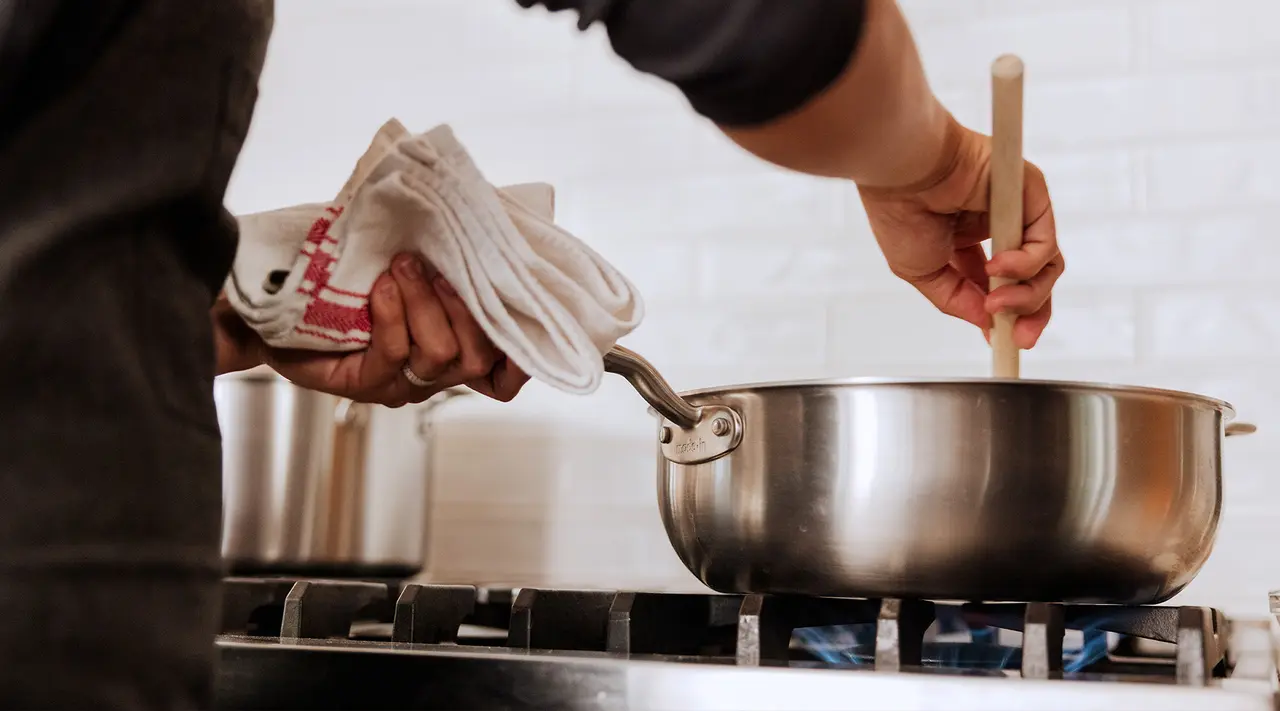You already know that the Stainless Clad Saucier is the perfect pan for so many things. Whether that’s finishing pasta, making curry, or even stir frying in a pinch, it’s an incredibly versatile pan. Chef Ryan Wong shared a different use for the Saucier—spices. “I like it for toasting spices, because everything stays inside,” he says, citing the high, curved walls.
But why should you even be toasting spices in the first place? Whether they are ground or whole, heat brings out the flavor of dried spices by releasing their oils. It can even open up more complex flavors like we see when applying heat to chilies. And when you’re crafting spice blends at home, releasing those oils is the key to unlocking deeper, more nuanced flavors. Think about the difference between bottled lemon juice and fresh squeezed—they are both tart but when you’re juicing the lemon yourself, the subtle floral notes are going to be more pronounced.
Select Your Spice
First, it is important to note that not all spices are well-suited for toasting. For example, you would not want to toast herbs such dried basil or you’re likely to set off a smoke alarm. Stick to sturdier aromatic spices. “I like to toast sesame seeds, pepper—black pepper, white pepper—and coriander seeds,” says Chef Wong. If I'm ever making a spice blend, like a five spice or something, then I'll throw it all in there and toast it together.” It’s also worth noting that while this technique works best with whole spices, it can also serve as a way to boost the flavors of pre-ground ones too.
Find the Perfect Pan
Place your Saucier over medium heat. What makes a Saucier perfect for this is the fact that your spices will stay in the pan. “If I use the sauté pan, I’ll lose like half [my spices] to my stove grate,” Chef Wong says. You’re not going to need any oil for this and remember, the spices will be releasing oils of their own. It’s important that the spices be in a single layer, so make sure you have enough room for even cooking.
Use Your Senses
Like stir-frying, toasting spices is not something you want to walk away from. There are three main signifiers that will let you know your spices are done. First, you will start to notice a warm, toasted smell, reminiscent of toasted nuts. The color will likely be the second thing to change, with the spices darkening. Sometimes, this is easier to see with pre-ground spices. Finally, some spices like cumin or mustard seed will start to lightly pop. This whole process should take less than five minutes.
Blend It Up
Once your spices are toasted, immediately remove them from the heat and transfer to a Side Bowl or Sheet Pan to cool. Residual heat from the Saucier could cause them to burn. Note: if you have burnt your spices, call it a loss and start over. Burnt spices will lend a bitter, acrid taste to whatever you put them in, so it’s better to just start fresh. When the spices have cooled, you can now process them, ideally in a molcajete or a designated spice grinder.
Now that you know the secret to toasting your own spices, check out Chef Wong's Five Spice Blend and try it yourself.























